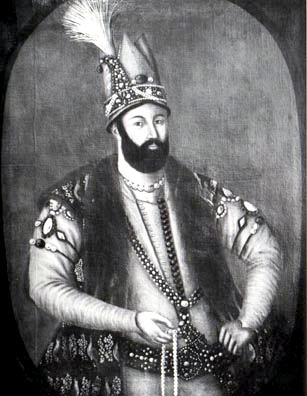The Armenian autonomous duchies in Karabakh. Their origins and role.By the time of establishing the Karabakh khanate, there still existed 5 Armenian melikdoms (feudal possessions), which, as mentioned, Nadir shah released from subordination to the Karabakh province (beilarbeiligi), though they were situated in its center.The author of one of the most valuable sources on the history of Karabakh «Karabakhnameh» Mirza Adigezal bey (1770-1848) gives important information about the origins of these melikdoms. According to his information, of these melikdoms only the Khachin melikdom had historical roots in Karabakh, and the other ones emerged in this territory in various periods of XVII c. and the Dizak melikdom- in the beginning of XVIII c.Thus, the founder of the Dizak melikdom was Yegan originally from the Lori region in Armenia. He moved to Karabakh and got the melik title by Nadir shah’s decree (farman).
The founder of the Varanda melikdom was Mirza Shahnazar originally from the Sevan region in present-day Armenia. He moved to Karabakh in the beginning of XVII c. during the Safavid-Ottoman war and in 1603 got «the melik of Varanda» title from the Safavid shah Abbas I. His offspring Melik Shahnazar was Panah Ali khan’s ally and even was related with his son, the future ruler of the Karabakh khanate Ibrahim Khalil khan, having given the later his daughter.
The melik of Chelaberd was melik Allahkulu from the Yesayi clan. He was originally from Syunik in Armenia and moved to Karabakh in 1637.
The Talish (Gulistan) melikdom was established in the beginning of XVIII c. Its melik was melik Usub from the Beyleryan clan of the village of Nij in Kabala region of Azerbaijan where the Udins live.
And, at last, the Khachin melikdom was the only local melikdom in Karabakh. Its possessors claimed to be the heirs of Hasan Jalal, the descendants of local Christian Albanians. The melik of Khachin Mirza, like the melik of Varanda, was the Karabakh khan’s ally.10
From the first years the Karabakh khanate was established, it underwent invasions at hands of Iran and of other khanates. That’s why, it was important to end up with the feudal dissociation and to unite. As was mentioned above, the Khachin and Varanda melikdoms obeyed the Karabakh khan and became his allies. But meliks of Dizak, Talish and Chelaberd stayed in opposition to Panah Ali khan, and thus, willy-nilly, served the interests of external, and primarily, the Iranian invaders. The historian Leviatov V.N. wrote: «Meliks represented the forces interested in preservation of the feudal dissociation in Karabakh. This was rather dangerous in the second half of XVIII c. The divided forces could easily fall under the authority of more powerful neighbors of Iran and Turkey»11. After victory over Haji Chelebi, who was supported by some meliks, Panah Ali khan subordinated by force those of them, who refused to obey him. He also brought the Karabakh clans Otuz iki, Jevanshir from Khorasan back to Karabakh.
References:
- Mirza Adigezal bey «Karabakhnameh» pp. 36-37;
Leviatov V.N. «Essays on the history of Azerbaijan in XVIII c.» (Ocherki iz istorii Azerbaydzhana v XVIII v.) Baku 1948 p. 145 (in Russian);







